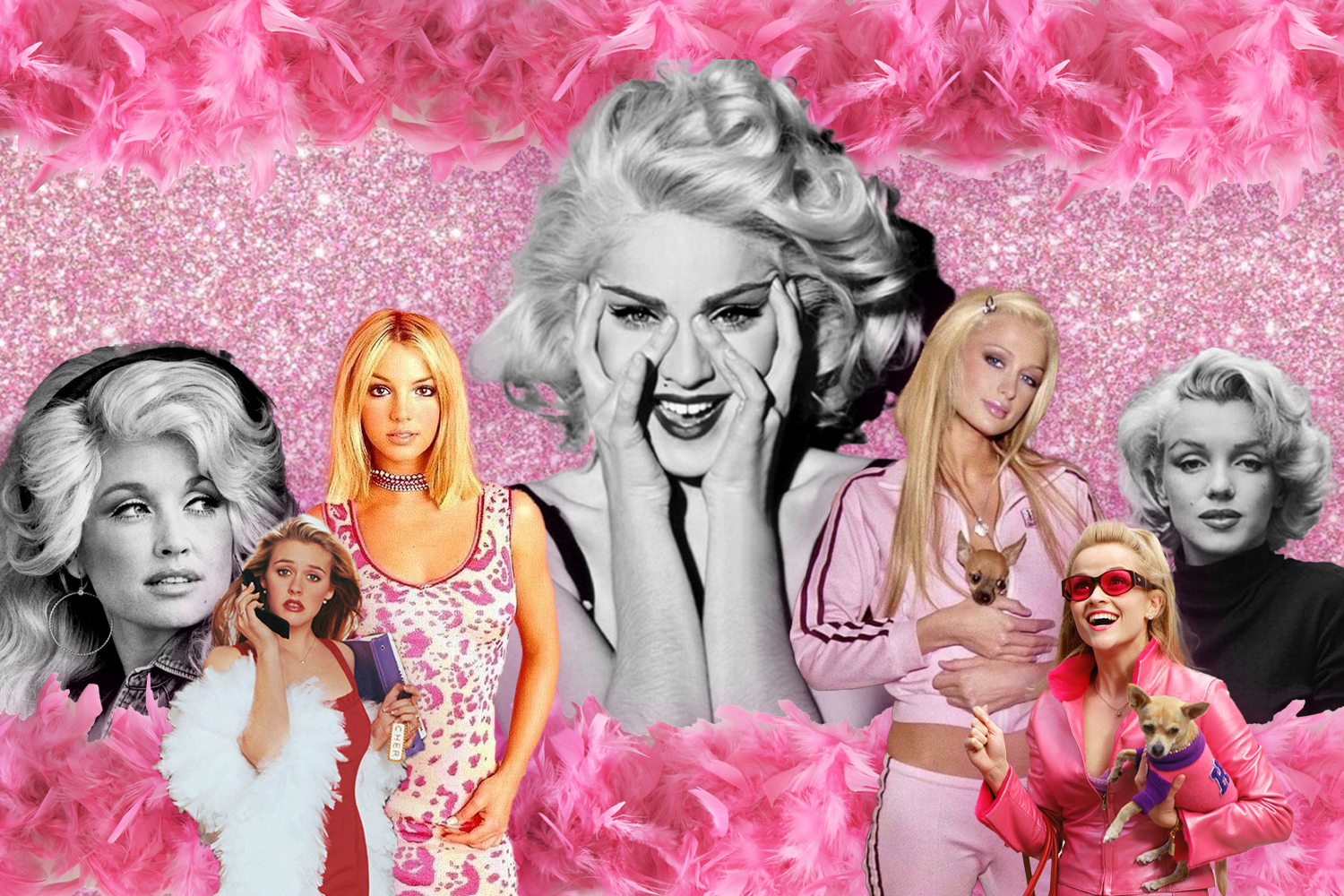You’re Not Buggin’: Bimbos are Back!
Graphic by Ruth Ellen Berry.
It’s bimbos, bitch: they’re officially back. As seen in social media trends and recent runway shows, there’s a newfound appreciation for all things glittery, frilly and — of course — hot pink. Except this time around, the term “bimbo” has undertaken a new, less sexist meaning. But first: a totally fab history lesson.
Bimbo Beginnings
While the term “bimbo” is most commonly known today in association with women, it was once used to describe threatening men. According to The Guardian, in the 1920s, the slang word first was used to reference a “menacing, brutish bully.” The reason behind the switch to today’s meaning is unclear, but the word first began to take on its modernly understood definition in Frank Crumit’s 1920s song “My Little Bimbo Down On The Bamboo Isle.” His lyrics described a scantily-clad spectacle of a woman, creating the first publicized image of the bimbo — a woman admired solely for her body and the pleasure she can give men.
This objectification carried on into the pin-up girls — nearly nude models whose pictures in magazines could be cut out and “pinned up” — of the 1940s. Then, the original blonde bombshell, Marilyn Monroe, solidified the bimbo as a sex symbol in the 1950s.
Bimbo Summit & Downfall
If bimbo culture were to have a peak, the 1990s and early 2000s were surely the precipice. Splashed across tabloids, stereotyped in movies and laughed at on television, the word “bimbo” became inseparable from scandal and simplemindedness. It was used to slander women based on their appearance and to degrade their intelligence, finding home in celebrities like Anna Nicole Smith and Pamela Anderson and characters like Cher Horowitz and Elle Woods.
While bimbos were often regarded in an unflattering light, some celebrities proudly adopted the term as an act of feminism. In a 1990 New York Times article, Madonna defended her look as a glamourous, sexy blonde. “I may be dressing like the traditional bimbo, whatever, but I'm in charge,” she said, “And isn't that what feminism is all about, you know, equality for men and women? And aren't I in charge of my life, doing the things I want to do?” Dolly Parton has similarly been hailed as a feminist icon for her flamboyant and unapologetic style, and she is famously said to have remarked, “I'm not offended by all the dumb blonde jokes because I know I'm not dumb... and I also know I'm not blonde.”
Despite these positive outlooks, the most infamous use of “bimbo” was perhaps in the 2006 New York Post article describing Paris Hilton, Britney Spears and Lindsay Lohan as the “Bimbo Summit,” who have “no clues, no cares, no underwear.” The article proceeded to condemn them — especially Spears, who had recently become a mother — for drinking and partying.
In the early 2000s, the bimbo teetered between doltishly darling and severely scrutinized. Consequently, her demise bore to the new idealized women: the manic pixie dream girls and girl bosses of the 2010s, according to a 2022 Vice article. Original, intelligent and complex, these 2010s women were the polar opposite of the Karen Smiths of the noughties bimbo era. Their reign on Western society’s image of a sophisticated woman was as tight as Dereon jeans — until now.
Gen-Z Prefers Blondes (Sort of)
Scrolling on your social media feeds, you may come across frivolously dressed young people blinged out in bright hues without a care in the world. Self-proclaimed “New Age Bimbos” — this next generation of the bimbo draws on the noughties nostalgia, but their resurgence is as timely as ever.
After the pandemic’s slump, which revealed the professional burnout of many Americans, the New Age Bimbo’s nonchalance is refreshing. But they claim there is more to bimboism than its shiny exterior. In a 2020 Rolling Stone article, prominent TikTok bimbo Griffin Maxwell Brooks explains how “the modern bimbo aesthetic is more about a state of mind and embracing, ‘I want to dress however I want and look hot and not cater to your expectations.’”
This turn from defining a bimbo based on specific physical qualities (usually white, skinny and blonde) toward a free-spirited mindset has allowed for much more inclusivity into bimbo culture based on size, race and gender expression. Another popular TikTok bimbo, Chrissy Chlapecka, welcomes all to her hot pink, humorous profile. “Good morning bimbos, thembos, himbos, bimboys and any bo you wanna be,” Chlapecka says at the beginning of one of her TikToks.
The fearless optimism and sunny self-assuredness of New Age Bimbos is welcomed after the dark days of the pandemic. It’s an overdue good riddance to the recycled trope of objectifying and degrading confident women, and it’s a diversification of the bimbo aesthetic and ideals. To be a bimbo today is to strut down the sidewalk without caring about the harsh words of others — it’s to be fun, flirty and fabulous on your own terms. Now that’s hot!

